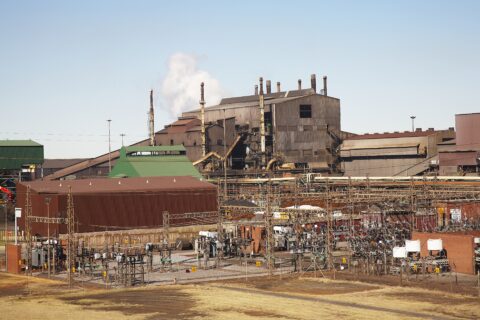SA Mining
What Can South Africa Learn From Other Mining Destinations?
Why? Because South Africa had a 100-year stretch of maintaining solid earnings and dividends through improved efficiencies, development and growth. Even in the face of flat-to-down commodity prices, as an investment in well-run mining companies, South Africa had few peers.
By the end of 1980 South African mining companies had nearly the same market capitalisation as the rest of the world’s mining shares combined. But that was then; today is dramatically different.
Today, South Africa can learn an enormous amount from other mining destinations, especially our nearest neighbours Botswana, Zimbabwe, the Democratic Republic of the Congo (DRC), Zambia and Ghana. It can learn many lessons from Chile and America too.
The South African mining environment today is certainly not what it was 15, let alone 25, years ago. SA’s mining companies have been relentlessly attacked from all sides, since the infamous 1987 mineworkers’ strike.
Unions, government and now communities all seem to be on the path to plunder, extort, confiscate, demonise and destroy the mines. Almost every declaration, meeting or piece of legislation and policy seems aimed at ending mining in South Africa. Nationalisation; expropriation; BEE; triple BEE; employment equity – the list goes on, forever it seems. In fact, one wonders if South Africa even wants to learn anything related to keeping, let alone attracting, mining investment from other countries. It sure doesn’t appear so.
As it is, South Africa’s huge (9 million and growing) unemployed labour force is very much aligned with the 450 000 gold miners retrenched since 1988. They all want to work, but there are no jobs left. Why? We have seen this movie many times before – from Ghana down through Uganda to Kenya, Tanzania and definitely in the DRC, Zambia and Zimbabwe.
Just over 100 years ago, the last three countries in particular began building a very modern and successful mining industry. By 1927, the mining industry in all three countries was growing exponentially. By 1960, copper production from the DRC and Zambia was over 850 000 tonnes per annum: 50% more than Chile. This in turn fed huge growth in the local beneficiation and equipment-manufacturing sectors.
And so their mining industries kept growing, as did the development and wealth of the countries and their people, until the early 1970s when the DRC and Zambia were each producing nearly the same tonnes of copper per year as Chile!
And then it happened – policy change, including nationalisation, legislation and then demonisation.
First Zambia then the DRC decided to nationalise all of their mines – followed by other huge governmental interference. This almost completely wiped out the mining industry in the two countries. At the same time, halfway across the world, Chile and the United States decided to grow their mining industries by increasing investment in the sector.
The result? Chile’s copper production rose from 700 000tpa to 5.5mtpa by 2004. And America’s gold and coal production mushroomed from 50tpa to over 350t (gold) by 2000 and coal produced increased from 612mtpa to 1bn tpa by 1990. This was a result of appropriate policy, legislation and attitude.
Whereas Chile and America looked to grow their mining industry and wealth, South Africa, now run by the ANC, looked instead to pillage and extort its world-renowned resources industry for short-term nefarious, minority monetary and political gain.
So how does South Africa now reverse from shrinking mining and investment back to growth?
Simple – policy, legislation and attitude change. The industry desperately needs policy that is fair, practical, clear and bound by the rule of law, combined with meritocracy and elements of government assistance and incentives (such as those implemented by South Africa’s automotive industry).
As examples, Zambia and the DRC reversed their convoluted, impractical policies and legislation which were destructive to the mining sector and the countries themselves. Meritocracy and freedom were given new meaning and government incentives such as tax and royalty holidays for as long as 10 years were employed. The freedom to import certain equipment without undue taxes and restriction, and much else, was also implemented. Communities were subsequently encouraged to welcome mining and investment.
Chile improved its mining legislation which saw its industry grow eight-fold. America’s policy too reflects an example of how to attract investment. For example, foreign manufacturers were encouraged to relocate facilities to the US. Incentives included free land, free utilities, tax holidays and free or low-cost infrastructure. Mining investment is also courted and welcomed.
None of this is hard to do for SA. But it would mean a direct reversal of the false ideology and destructive propaganda expounded by the ANC these past 30 years.
Is South Africa up to the task? That, its citizens will have to decide.
But quickly: time is wasting and investment is leaving.







 Sign-up and receive the Business Media MAGS newsletter OR SA Mining newsletter straight to your inbox.
Sign-up and receive the Business Media MAGS newsletter OR SA Mining newsletter straight to your inbox.